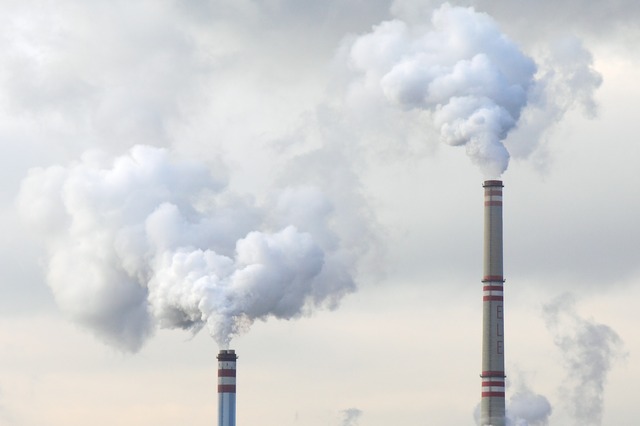
Trump's failed attempt to bring back coal jobs
Read a summary using the INOMICS AI tool
Along with a border wall and vague promises of greatness, one of Trump’s key campaign pledges was to bring back jobs to the American people. He situated himself, in contrast to Clinton, as the protector of the everyman, a mystical demographic that were at the mercy of the Chinese, their jobs being poached from right under their noses. His plan – as far as he ever articulated it – was predictably grandiose, and in part based on the resuscitation of the dying coal industry. The mines, he promised, would be brought back, en masse, bringing with them jobs and prosperity. His envisioned ‘greatness’ was to arrive accompanied by thick, black, environment-threatening, smog.
 Election promises
Election promises
There was obvious political expediency behind such a statement. As a message, bringing back coal jobs remained potent in the rust belt, particularly in states like West Virginia, ravaged by years of industrial decline. And as the election proved, it was sufficiently persuasive; Trump’s carrying of states such as Michigan, Wisconsin and Iowa – for many years blue – forged his unlikely route to the White House, despite losing the popular vote. As an election ploy, however, promises of coal riches, much like the rock itself, are one-use-only. If after great effort – as has been made – employment and money don’t return, the promise loses its credibility. And as the 2018 midterms showed, this reality has dawned and the grumbles of discontent are increasingly audible. From an economic perspective, the pinning of such significance on coal was always questionable, to say nothing of how catastrophic it is environmentally. As of 2018, coal made up just a sliver of the American economy, employing around 75,000 people. Or, put another way, fewer people than currently work at bowling alleys or nail salons.
Renewables offer the answer
Even if enlarged far beyond its current state – a project that would be prohibitively expensive – the industry is an incredibly inefficient means of job creation, for a number of reasons. Typically, the process by which energy is extracted from fossil fuels is mechanised and capital-intensive and does not require much human involvement. This is in stark contrast to the renewable energy industry, which is far more labour intensive. Solar panels, for example, require humans to install them, and wind farms need technicians for regular maintenance. If you want jobs, renewables are where they are.
Statistically, this fact is already reflected in the number of Americans employed in renewable energy: around 260,000 work in solar power alone, over three times that of coal. The wind power industry also employs more than coal, the National Renewable Energy Laboratory (NREL) estimating around 100,000 nationwide. And these numbers are growing: wind power technician is now the fastest growing job in the whole country – a fact unlikely to escape Trump’s lips any time soon.
Positive Projections
In a recent study assessing the sectors' potential for job creation, the NREL concluded that renewable energy technologies ‘create more jobs per dollar invested than conventional electricity generation technologies’. And, because they use ‘indigenous’ resources, most of the ‘energy dollars can be kept at home’. The study left little doubt: if the rust belt is to be redeveloped and employment levels boosted, investment into green energy is the way to go. It is less costly, less polluting, and the jobs it produces are more plentiful.
Looking forward, the U.S. Department of Energy has estimated that ‘to achieve 20% wind power by 2030 the United States will require more than 100,000 additional wind turbines, creating more than 500,000 new jobs.’ The Wind Vision Report has made similar predictions, suggesting that wind has the potential to support more than 600,000 jobs in manufacturing, installation, maintenance and supporting services by 2050. The job creation would also be geographically well distributed. Turbines can be installed in rural areas at existing farms, often places that have suffered declining incomes and living standards, and where financial injection is most needed. A widespread program of wind farm installation across a state like Illinois, for instance, could provide significant boosts to otherwise flailing local economies. As one expert put it: ‘from a community perspective, the effects could be transformative.'
The stimulation of manufacture
Commitment to renewables also has the knock-on effect of stimulating manufacturing, an area which has declined across the country and another of Trump’s foremost gripes. This is already happening and wind, again, provides a good example. Turbines are complex bits of machinery, and their construction involves long supply chains. In response to growing demand, their parts are increasingly being sourced from within the US: between 2004-11, the number of manufacturing facilities increased tenfold. With additional commitment and investment in the sector this could be developed even further, and its benefits maximised. As of 2018, around 50% of ‘turbine value’ was produced in the U.S, twelve times that of just a few years prior. Many manufacturers are now planning to increase this to 100% – an expansion that should be encouraged at the federal level.
Such impetus would certainly be a preferable alternative to the current situation, where jobs in coal have not been forthcoming. According to Andrew Cosgrove, a Bloomberg Intelligence senior analyst, Trump’s ‘impact on the coal sector [thus far] has been extremely minimal in nature despite his rhetoric.' After two years in office, and much deregulation, ‘the needle has barely budged on U.S coal mining employment’. His announcement that ‘the coal industry is back’, delivered perversely to a room made up of many out-of-work coal miners in West Virginia, is simply not reflected in the data.
How long will he persist?
Ever since his election, Trump has been resolutely swimming against the tide. The coal industry dying for good reason, and there is little that can be done about it. The sector is an inefficient creator of jobs, and because of the increased costliness of transportation and general production, getting less and less competitive in the marketplace. And that is ignoring the environmental costs, which are so severe they are difficult to fully quantify.
If Trump were sincere in his promise of putting Americans back to work, renewables would figure high on his agenda. That is where the future lies; it is folly to think otherwise. The fossil fuel lobby, however, has infiltrated deep into his government and gained a controlling stake. A former coal lobbyist actually heads up the Environmental Protection Agency in what appears to be a staggering conflict of interest. Sound energy policy now looks like it will have to wait for Trump to depart office. Until then, it remains to be seen how long his obsession with coal will last, despite the mounting evidence exposing its stupidity. How much money will need to be wasted? How many reports need to be published that point to better, greener alternatives to throwing money down a mine? Alas, like most predictions with this capricious, callous, and careless President, all bets are off.
-
- Postdoc Job
- Posted 1 week ago
Postdoctoral Researcher in Empirical Microeconomics (m/f/d)
At Düsseldorf Institute for Competition Economics (DICE) - University of Düsseldorf in Düsseldorf, Germany
-
- PhD Candidate Job
- Posted 1 week ago
12 Doctoral Researcher Positions in the Marie Skłodowska-Curie Doctoral Network HEPARD
At University of Duisburg-Essen in Essen, Germany
-
- Postdoc Job
- Posted 1 week ago
Postdoctoral Researcher in Behavioral/ Experimental Economics (m/f/d)
At Düsseldorf Institute for Competition Economics (DICE) - University of Düsseldorf in Düsseldorf, Germany











